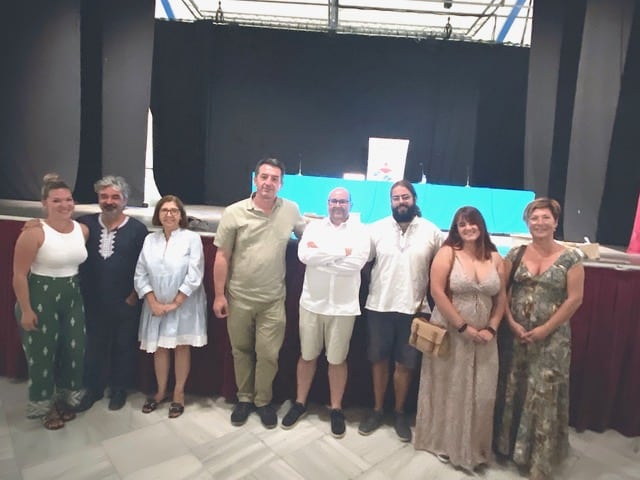The Mojácar la Vieja 2022 excavation campaign has concluded with very positive results, as those responsible for the dig revealed in the presentation of the results: the University of Granada, the MEMOLab Biocultural Archaeology Laboratory, the director of the General Research Plan and Mojácar Council.
As is customary, at the end of each campaign’s excavation works, those responsible explain the findings and conclusions stemming from the works carried out on Mojácar la Vieja to local residents and to those who are interested.
On this occasion, the locality’s Multi-Uses Centre, with a large audience, was the meeting point where Emmanuel Agüero, Mojácar Council Tourism Councillor; José María Martín Civantos, Director of the MEMOLab laboratory; Jorge Rouco Collazo, director of the General Investigation Plan; Julio Miguel Román, PGI Researcher; Cristina Martínez Carrillo, Archaeological Material Expert; and Noelia Aguado, Community and Participative Archaeology Expert, gave an interesting conference about the novelties found.
The 2022 campaign is the fifth since this project was started and the first carried out with the support of the General Investigation Plan.
This year two main lines of action have been followed: one of them following the outside walls, by the entrance gate, and another in the area outside, on the southeast hillside, where it is suspected there were dwellings.
Worthy of note is the appearance of another wall and corresponding entrance gate, at the foot of the one initially found during other actions, and that in previous years was thought to be the only entrance to the compound. The defences of Mojácar la Vieja, as shown by its two walls, are much stronger than initially believed, indicating a huge investment in the construction of the castle and its control with this double fortification. This makes the defence and the attack very complicated since it is very intricate, both being built on a curve. This also suggests that this great effort would only have been made due to the great importance of the settlement.
In the new open zone, in the area outside the walls on the southeast side, a very well-structured, two-floor house has been found, and what could be other very well-built houses that correspond to the typical models of the Moorish era.
In the conclusions obtained during this month of work, there have taken part a group of professionals made up of researchers, the majority from MEMOLab, and by another 13, external, who are professors and researchers from different universities and analysis centres, such as CSIC, from both Spain and the UK, as well as two shifts of 35 archaeology students who have worked on the excavations.
Standing out is the reaffirmation of the potential, whether from the historical or heritage point of view of Mojácar la Vieja, that little by little is being uncovered and which can be seen with the naked eye on the mountain itself, underlining the importance and the significant remains, together with its good conservation and the possibility of understanding everything related to this settlement: how it was built, when and how it was abandoned.
In addition, increasingly more evidence of the instability of the terrain is appearing, mainly in the area of the old entrance.
Work remains to be done on its origin and its formation in order to understand how it was founded, who created it and where the population came from, since we already know how they lived and what type of dwelling was used.
Also remaining is the work of study and analysis throughout this year, from organic remains like thorns, scales, shells, eggshells, and ceramic remains, including a pipe with remains of what is suspected to be hashish, found this year, and which will yield new data, new surprises about the form of production, subsistence and organisation, providing a complete image of Mojácar society of those times.
Coming away from the dig site, mixing with local people and bringing them closer to it, understanding the direct relationship between the two settlements – Old and New Mojácar with their surroundings – and keeping the intangible heritage alive, is a task that MEMOLab tries to carry out in all its actions.
With the PGI there opens a new stage of analysis and of basic management to restore, conserve and highlight its importance so it can be visited.
Collaboration with both the Valparaíso Foundation and the owners of the land on which they are working, opens the door to gaining more support from the State, to the 1% Cultural that would be added to that already provided by the Local Council and from the Smart Heritage company.





